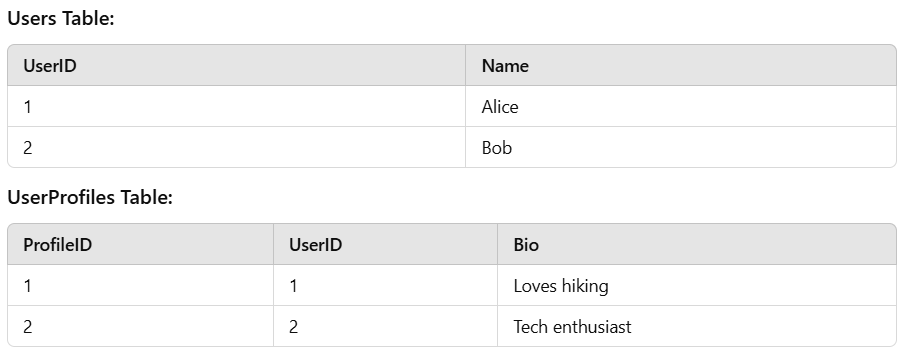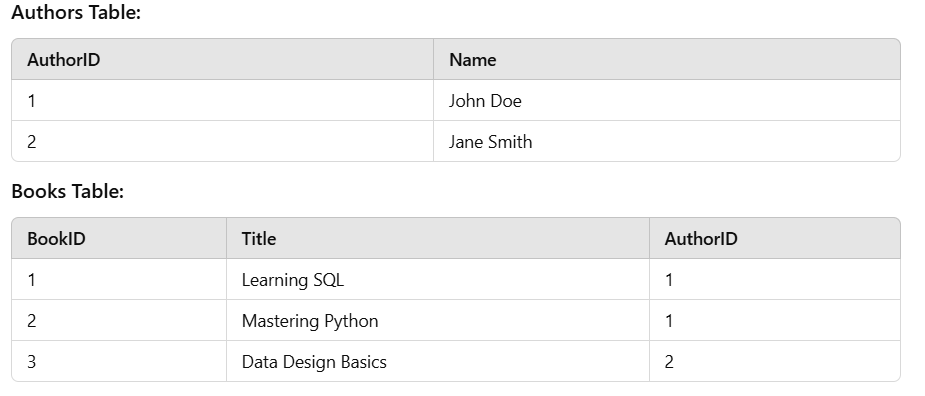8 Demystifying 1:1, 1: Many, and Many: Many Relationships in Data Models
chapter 2 Excerpt
Database relationships are the backbone of structuring data. The three common types—1:1, 1: Many, and Many: Many—help define how data tables interact. Let’s understand them with relatable examples.
1:1 Relationship
A one-to-one relationship means each record in one table maps to exactly one record in another. This is useful for storing additional details.
Example: Users and Their Profiles
In an application, every user may have one detailed profile.
Explanation: Each user has exactly one profile.
Use Case: Storing optional or private data in a separate table.
SQL Query:
sql
SELECT Users.Name, UserProfiles.Bio
FROM Users
JOIN UserProfiles ON Users.UserID = UserProfiles.UserID;1: Many Relationship
A one-to-many relationship exists when one record in a table maps to multiple records in another.
Example: Authors and Their Books
An author can write multiple books, but each book belongs to one author.
Explanation: Each author can have multiple books associated with them.
Use Case: Organizing hierarchies like authors and books, categories and products, etc.
SQL Query:
sql
SELECT Authors.Name, Books.Title
FROM Authors
JOIN Books ON Authors.AuthorID = Books.AuthorID;Many: Many Relationship
A many-to-many relationship occurs when multiple records in one table associate with multiple records in another. This requires a junction table to link the two tables.
Example: Students and Their Enrolled Courses
Students can enroll in multiple courses, and each course can have multiple students.
Explanation: A student can take multiple courses, and a course can have many students.
Use Case: Linking many-to-many relationships like students and courses, products and orders, etc.
SQL Query:
sql
SELECT Students.Name, Courses.Title FROM Students JOIN StudentCourses ON Students.StudentID = StudentCourses.StudentID JOIN Courses ON StudentCourses.CourseID = Courses.CourseID;Key Takeaways
1:1: For uniquely paired data (e.g., User ↔ Profile).
1: Many: For hierarchical relationships (e.g., Author → Books).
Many: Many: For interconnected data (e.g., Students ↔ Courses).
Designing these relationships correctly ensures an efficient and scalable database structure.
Thank you for reading! If you enjoyed this article and want to learn more about designing data-intensive applications, consider subscribing or follow me on LinkedIn.




